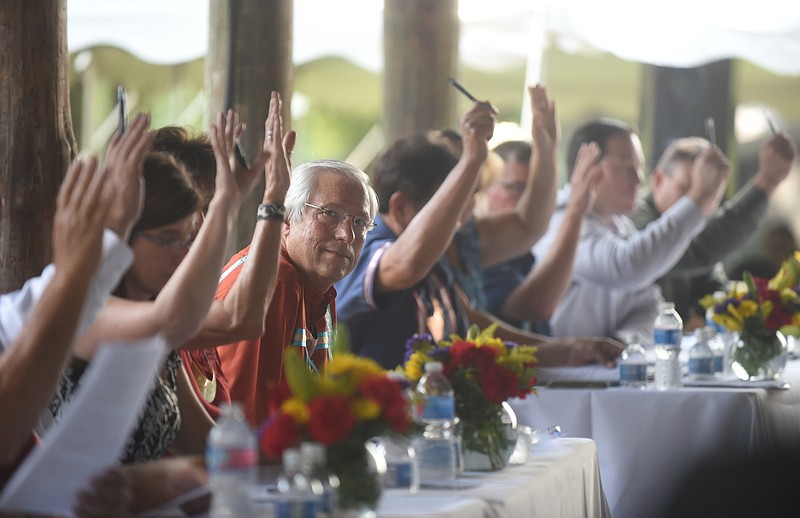Read more
3 Cherokee tribes hold tri-council meeting today at Red Clay
This fall marks the 177th anniversary of the Trail of Tears - a stain on America's conscience to be remembered somberly and with prayers for forgiveness.
The glimmer of greed for gold pushed Americans of the time to clamor for the removal of American Indians, who at that point lived here in cabins, two-story homes, plantations and farms just as the immigrant settlers from England, Scotland and Germany did.
Chief John Ross ran a trading post and ferry just below Cameron Hill on the Tennessee River.
Major Ridge, who had fought with Andrew Jackson at Horseshoe Bend, owned a plantation replete with slaves in North Georgia.
These people were not in tepees, nor did they wear war paint. These Native Americans - many marrying into settler families or adopting settler names (Ross, Ridge, Rawlings, Sawyer, Thurman, Hicks and Ward, just to name a few) - simply lived on land where our government thought gold might be.
So, after years of John Ross and others fighting in the halls of Congress and in the courts, then-President Jackson ordered American Indians be removed. The roundups and removal of the Cherokee, Chickamauga, Muskogee, Creek, Choctaw, Chickasaw and other Indian peoples came to be known in their various languages as "the place where they cried" or the "trail of tears and death." Along their journeys, thousands died of cold and disease.
It was - and still may be - America's lowest point.
This weekend, the three federally recognized tribes of the Cherokee - divided by that removal and by treaties and later the Civil War - have come back together for meetings at Red Clay State Historic Park.
Red Clay, 12 miles south of Cleveland, Tenn., was the last seat of Cherokee government before the tribe's removal in 1838.
Like all governments and all groups, the Cherokee have been torn by division, as well as fate.
As early as the late 1700s and early 1800s, those who would become the Keetoowah people chose to leave their ancestral home in what is now Tennessee, Georgia, Alabama, North Carolina and South Carolina because they did not like the way other Cherokees embraced white settlers' ways. They migrated to Arkansas.
The second group formed from those who were removed westward to the Indian Territory that later became part of Oklahoma. There, the Cherokee Nation re-established itself with communities, churches, schools and newspapers.
The only Cherokee who remained in their homeland were those who were excluded through North Carolina's Reservation Act of 1819 or who dodged the federal army sent to root them out of the hills. Those factions became the Eastern Band of Cherokee Indians that operates today in western North Carolina near the city of Cherokee.
"The last time we met in Red Clay we were discussing the Indian Removal Act policy of the United States," said Joe Byrd, speaker and former chief of the Oklahoma-based Cherokee Nation. "Now we're coming back to discuss our common ground . ... The theme is 'We all come from one fire.'"
All of America should take a lesson.
